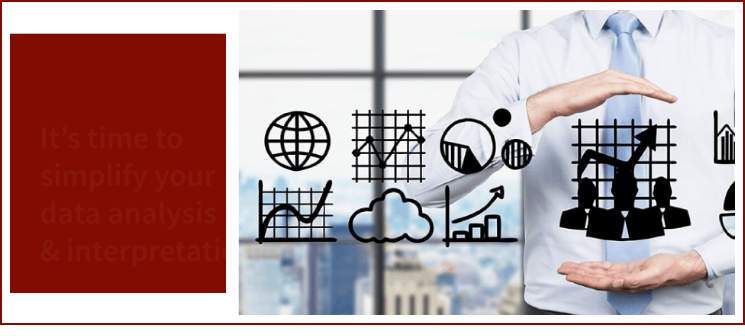Effective and trustworthy data analysis and interpretation are key factors to running a well-oiled, modern enterprise. Business decisions for forward progress are more easily made with reliable facts and comprehensive visuals, but make no mistake that truly optimized data analysis takes time to perfect. In all honesty, data analysis and interpretation are far more than a science; they are an art.
It is an art of strategizing that requires a great deal of attention and relies on a breakdown of well-established goals. Finding a strategy that works for your company will take time - and possibly some trial and error - but once an efficient and regulated process has been developed, you will find that your most valuable data can be put to use in less time.
Below, we have collected the top five ways in which you can steer your data efficiency in the right direction. These ideas are aimed at helping you create a streamlined process that will lead to more effective data analysis and interpretation.
The simple fact is this: if your data collection and distribution isn't properly controlled, you could be losing precious time. The following tips will put you on the path toward faster results, comprehensive user accessibility, and better decisions with targeted data design that works toward your established goals.
1. Automated Reporting for Time Well Spent
There is no better way to ensure faster data turnaround than by automating your reports. Simply specify what data you need and how you'd like it to be presented and let your automation software do the rest. Automation has several key benefits that include: saving time by reducing manual input, improving the accuracy of collected and reported data, alleviating heavy workloads, and increasing employee productivity. Ridding yourself of the time-consuming and costly step of manual data entry is a practical and powerful way to establish a more effective data analysis process.
2. Develop and Understand Your KPIs
Your business data is practically endless. But not all of it applies to your particular strategic goals, right? And depending on whether you're in marketing or sales your data needs are rather different, are they not? Use your company's goals to breakdown your data and prioritize your KPIs that serve a clear purpose. Don't clutter your reports with unnecessary information. By properly developing and implementing a functional set of KPIs you can build a greater understanding of the factors that most affect your company's progress.
3. Customized Reporting
Tailor your reporting to answer key questions. Again, this relies heavily on your ability to define your company's goals and what is most important for you to conduct your business most effectively. If multiple users from various departments are using your data system be sure to allow for customization that meets the goals of each individual department. While your company has an overarching goal each department will be focused on more specialized growth.
4. Utilize an Advanced Business Intelligence Dashboard
The best way to access and interact with your data is inarguably with the use of a BI dashboard. Platforms such as our own IBM Cognos can deliver customized, easy-to-use information to end-users inside and outside of your organization. High-level visualization, automated reports, and insightful analysis all come together into a beautifully designed module for success. Bulk data is handled and organized to your specifications so that you can always find the information you need to make informed decisions and turn plans into actions.
5. Establish (and Follow) the Process
Above all, establish a process that works for your needs. It doesn't have to be complex and it doesn't have to implement every one of these suggestions either. Focus on eliminating clutter and unnecessary time consumption, and remember that more than anything else your data should help you toward success.
If you are looking to fine tune your process of analysis and interpretation of data, our IT Professionals Guide to Data Analysis and Interpretation provides step by step guidance on best practices for any role in the enterprise, and includes a data interpretation worksheet. Download this guide today and be ahead of the game.





